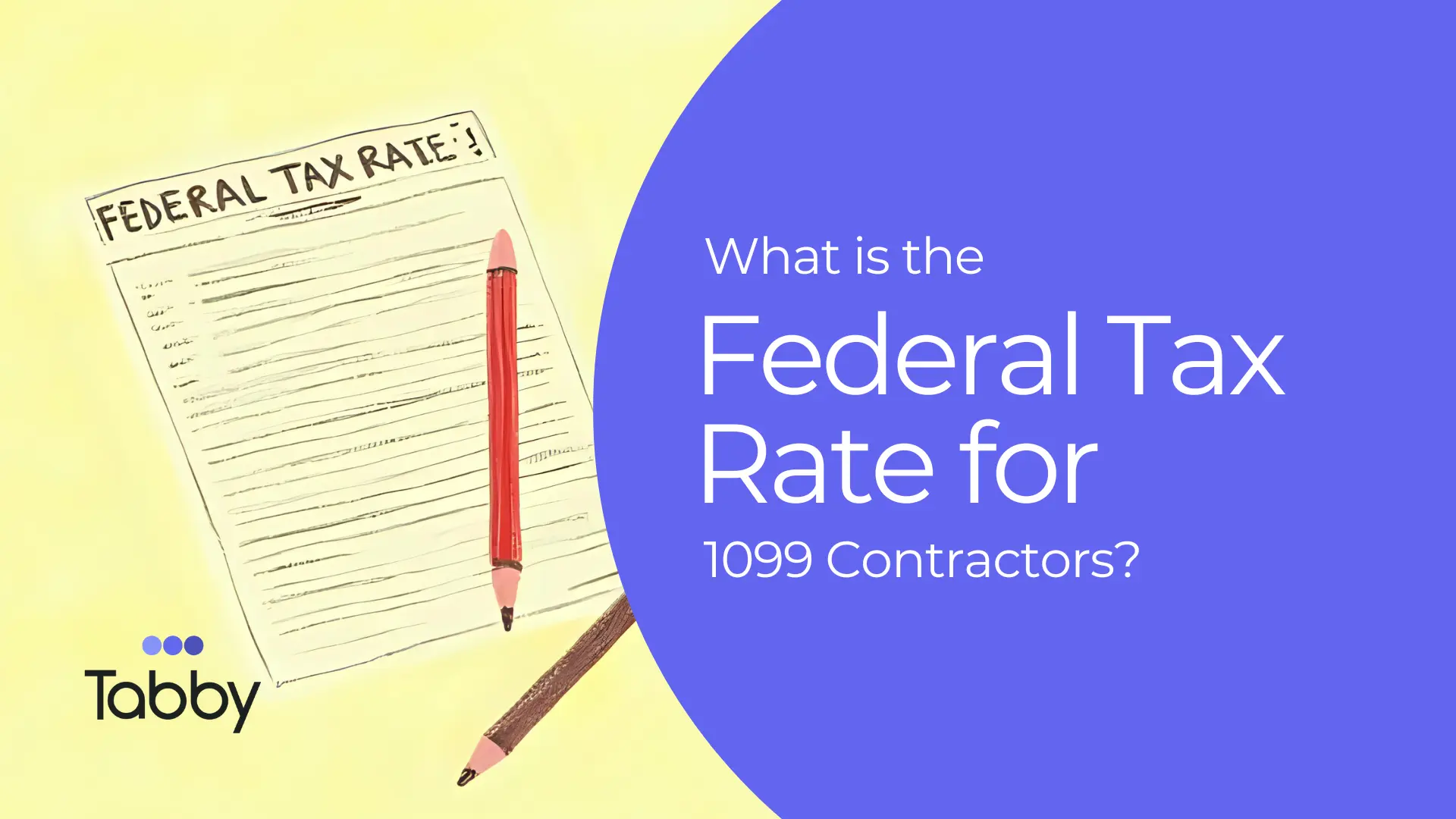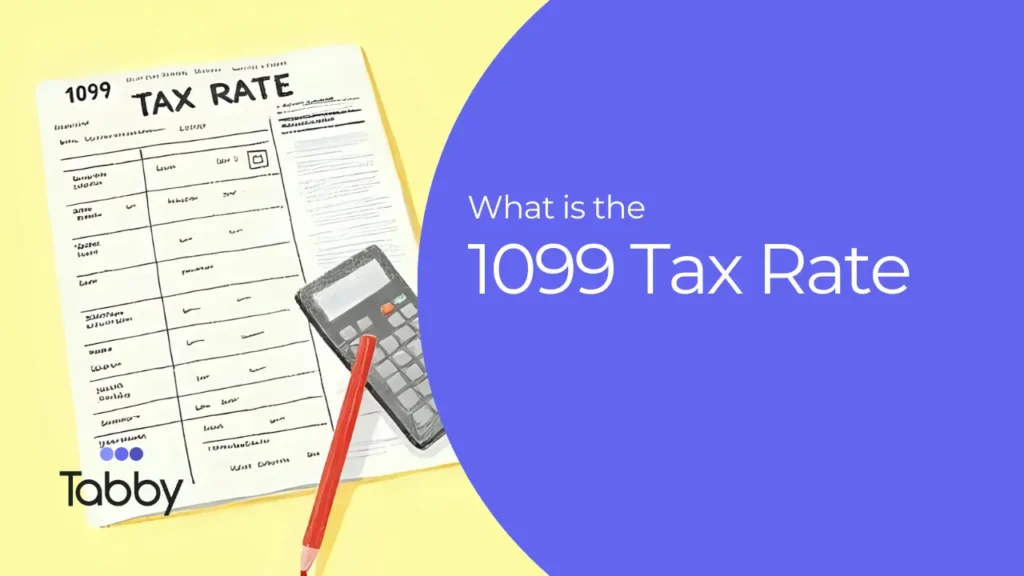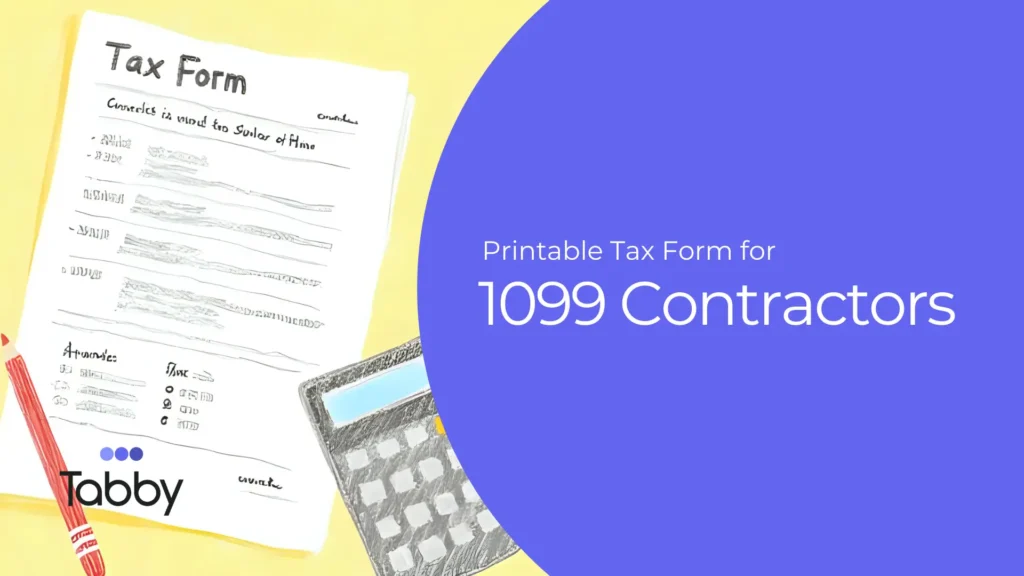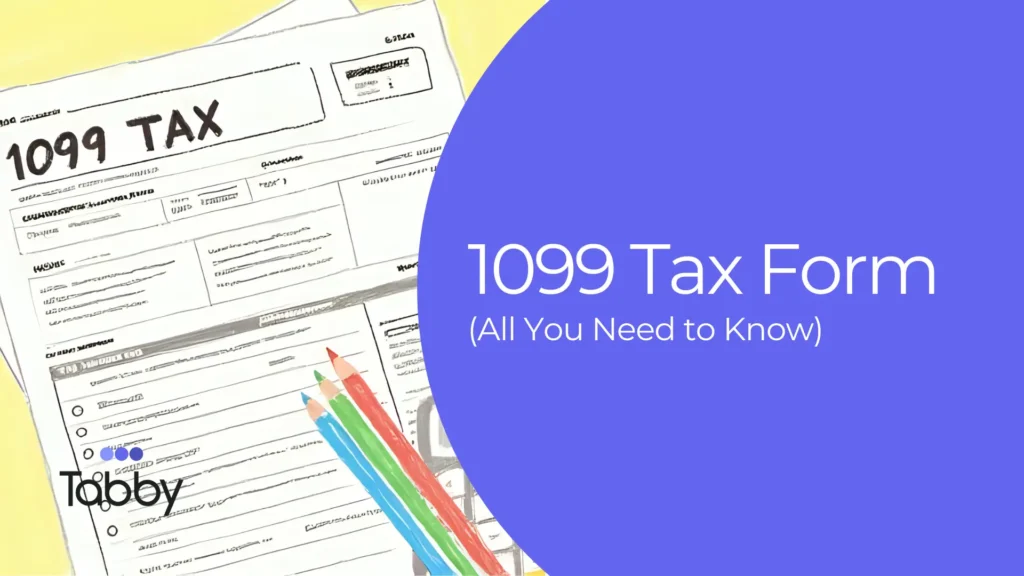- Tax Preparation,
- | October 28, 2025
What is the Federal Tax Rate for 1099 Contractors?

The question I probably get the most from freelancers and contractors is this: “So how much of this do I actually get to keep?”
When you’re on payroll at a regular job, you don’t really think about it. The taxes come out of your paycheck before it even hits your bank. But when you’re a 1099 worker, it’s different. You get the whole check. No taxes withheld. It feels great until tax season comes around and you realize, oh, wait… a chunk of this wasn’t mine to spend.
I’ve sat with clients who look shocked when I break down the numbers. So let’s clear it up.
Understanding the 1099 Federal Tax Rate
Here’s the part people miss: there isn’t one flat “1099 tax rate.” It’s a mix of two things.
1. Self-employment tax: This is Social Security and Medicare. If you’re W-2, your boss pays half. If you’re 1099, you’re the boss and the worker, so you pay both halves. That’s 15.3% right off the top. For 2025, the Social Security part (12.4%) applies only up to $176,100 of your net earnings, while the Medicare part (2.9%) hits everything above that too. If you make over $200,000 as a single filer, you might owe an extra 0.9% Medicare surcharge. Check out these self-employment tax details for the full scoop.
2. Federal income tax: This part depends on your bracket. Could be 10%, 12%, 22%, 24%, or higher, depending on your income. For 2025 single filers, it starts at 10% on the first $11,925, jumps to 12% up to $48,475, 22% up to $103,350, and so on up to 37% over $626,350. Married folks filing jointly get double those thresholds, basically. See the official federal income tax brackets to plug in your numbers.
Add those together and that’s your real tax bite. For 2025, the brackets have been adjusted for inflation, with the standard deduction for single filers hitting $15,000. That can help lower your taxable income if you don’t itemize. One silver lining: you can deduct half your self-employment tax as an adjustment before hitting the income tax calculation, which knocks the effective rate down a notch.
How the Federal Tax Rate Applies to 1099 Contractors
Nobody remembers percentages, so let me show you examples I’ve walked through with clients:
- At $30,000 income → you’ll owe around $7,500 (about 25%).
- At $60,000 income → closer to $15,500 (about 26%).
- At $90,000 income → roughly $26,000 (about 29%).
So most 1099 contractors should assume somewhere in the 25–30% range.
Why It Feels Worse Than W-2
Here’s what stings. On a W-2, you only pay half of that Social Security/Medicare piece. The employer covers the other half. But when you’re on a 1099, nobody’s covering you. It’s all on you.
That’s why a freelancer often feels like they’re paying more than their friend who’s an employee. In some ways, they are. The only way around it? Write-offs. Your deductions lower the income you get taxed on. If you’re not tracking your expenses, you’re just handing money to the IRS. I’ve seen clients literally overpay thousands of dollars because they weren’t organized.
When and How to Pay Federal Taxes as a 1099 Contractor
Another thing that surprises people: the IRS doesn’t want its money once a year. They want it four times a year.
- April 15
- June 15
- September 15
- January 15 (of the following year)
These cover your estimated payments for income earned in each quarter: Q1 (January-March), Q2 (April-May), Q3 (June-August), and Q4 (September-December). If a due date lands on a weekend or holiday, it bumps to the next business day, like that June 16 shift.
Miss one of those and you’ll get a penalty. I’ve had clients who owed an extra $500 just from being late. If your total tax bill is under $1,000 after withholding, you might skip the penalty, but don’t count on it if you’re earning decent freelance money. To avoid underpayment hits, aim for the safe harbor rules: pay at least 90% of what you’ll owe for 2025 or 100% of your 2024 tax (110% if your AGI was over $150,000 last year). I’ve seen folks dodge penalties this way even if their income jumps.
Figuring out how much to pay each quarter? Grab the worksheets in Form 1040-ES to estimate based on your projected income, deductions, and credits. It’s not as bad as it sounds once you plug in the numbers.As for actually paying, you’ve got options. Mail in your payment with a voucher from Form 1040-ES, or go digital, which I always recommend to avoid lost checks. Use the Electronic Federal Tax Payment System (EFTPS) for online transfers straight from your bank, pay by phone at 888-353-4537, or even from your phone with the IRS2Go app. Credit or debit card works too through IRS-approved processors, but watch for those processing fees. Whichever way, keep records, because I’ve had clients scramble without proof of payment.
The Mistakes I See Every Year
Here are the traps:
- Treating 1099 income like it’s “extra money” with no taxes attached.
- Forgetting about the 15.3% self-employment tax.
- Not saving as they go.
- Mixing personal and business expenses and losing deductions.
If you do any of these, you’re going to be scrambling in April.
My Rule of Thumb
Here’s what I tell every freelancer I meet: take 25–30% of every check and move it into a savings account immediately. Pretend it doesn’t exist.
That way, when taxes are due, you’ve got the money. No panic. No “how am I going to pay this?”
Where Tabby Comes in
This is one of the reasons I built Tabby. Most freelancers don’t want to think about taxes all year, but then it hits them all at once.
Tabby connects to your accounts, keeps track of your 1099 income automatically, and shows you how much to set aside. It also finds deductions you might miss if you’re swiping a personal card for business stuff. At tax time, your books are clean and audit-ready.
I built it because I got tired of watching people overpay simply because they weren’t tracking things properly.
Try Tabby free; it might save you thousands.
Final Thoughts
Look, being a 1099 contractor comes with freedom, you control your schedule, your clients, and your work. But that freedom also comes with responsibility. Taxes aren’t automatically handled for you, and if you don’t plan ahead, they can hit hard.
The truth is, the federal tax rate for 1099 contractors isn’t some mystery number. It’s just a mix of self-employment tax plus your income bracket. Once you understand that, it gets a lot less scary. The real challenge is staying on top of it all year so you’re not panicking in April.
That’s why I keep telling freelancers and small business owners the same thing: stay organized, set money aside as you go, and track every deduction you can. The IRS isn’t forgiving if you make mistakes, but if you play it smart, you’ll keep more of your money where it belongs in your pocket.
FAQs
What is the 1099 federal tax rate?
It’s not one number. It’s self-employment tax (15.3%) plus your income tax bracket. Most people land in the 25–30% range.
Do 1099 contractors pay more tax than W-2 employees?
Yes, because W-2 employees split Social Security and Medicare with their employer. As a contractor, you pay the whole 15.3%.
How much should I set aside?
Move 25–30% of every payment into savings. That keeps you safe for taxes and quarterly payments.
How does Tabby help?
It tracks your 1099 income, estimates your taxes, and makes sure your deductions are captured automatically.




